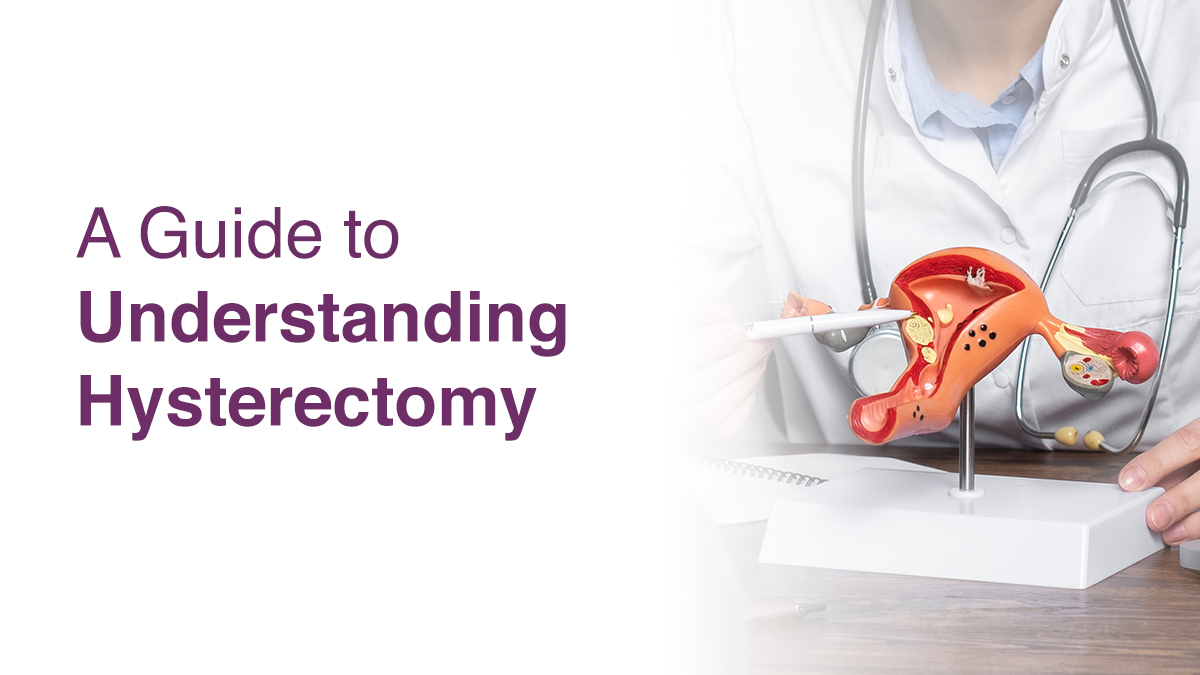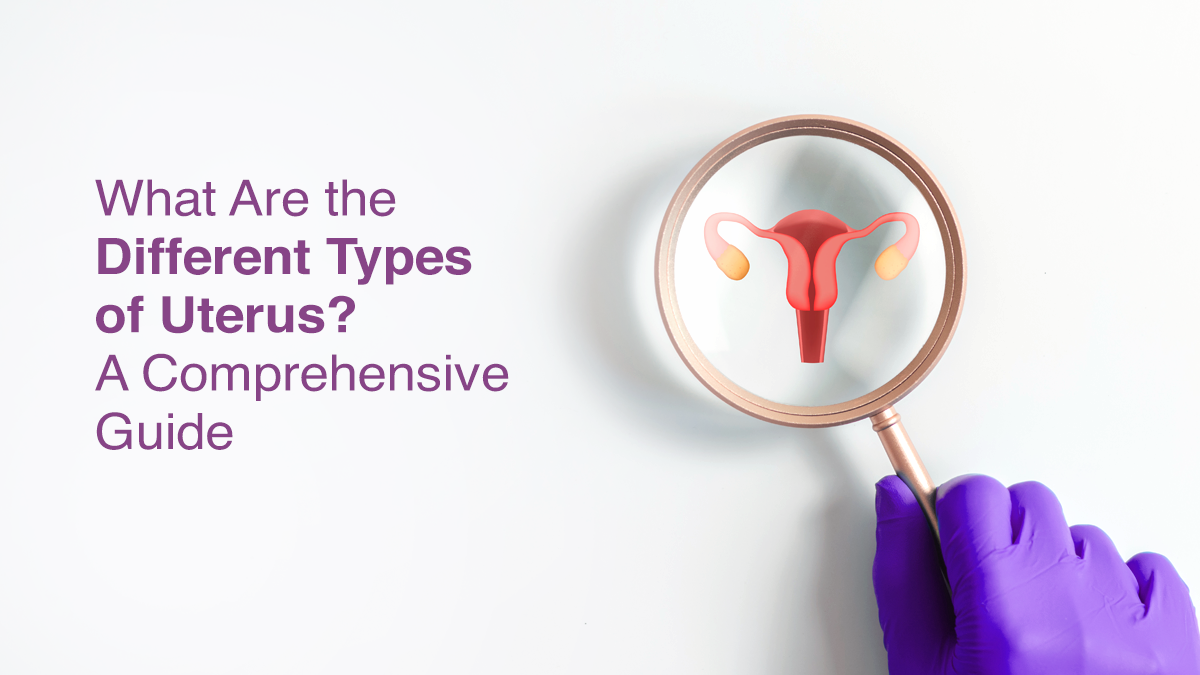
A Guide to Understanding Hysterectomy

A woman’s reproductive health is a vital part of her general well-being, and when problems crop up, they can considerably affect her life. Chronic pain, excessive bleeding, and other symptoms that interfere with day-to-day activities can be caused by conditions such as cancer, fibroids, or endometriosis. Surgery may be considered in some situations when conservative therapies or prescription drugs are insufficient to relieve the pain. A hysterectomy, which involves removing the uterus, is one such surgical option. A hysterectomy can be a life-altering procedure for many women, providing symptom relief and enhancing quality of life.
What is a Hysterectomy?
During a hysterectomy, your uterus and probably your cervix are surgically removed. A hysterectomy may entail the removal of surrounding organs and tissues, such as your ovaries and fallopian tubes, depending on the reason for the procedure. Following a hysterectomy, you will not be able to conceive or experience your menstrual cycle.
Types of Hysterectomy
Different kinds of hysterectomies exist. Your physician will go over each procedure’s possible risks, advantages, and adverse effects. It’s crucial to find out from your doctor whether removing the fallopian tubes and ovaries during your hysterectomy is advised. There are several types of hysterectomies:
Total hysterectomy:
It is the most popular kind of hysterectomy that involves removing the entire uterus together with the cervix.
Partial hysterectomy:
Only the uterus is removed during a partial hysterectomy. It is also known as a supracervical hysterectomy. The advantages as well as risks of keeping the cervix intact are still being investigated.
Radical hysterectomy:
The uterus, cervix, and upper portion of the vagina are removed during a radical hysterectomy, which is typically performed to treat cancer.
Reasons for Hysterectomy
A woman may require a hysterectomy for a variety of reasons, such as:
- Adenomyosis, which is a condition that results in painful, heavy periods
- Uterine malignancy, usually endometrial cancer
- Cervical cancer or cervical dysplasia, which are alterations in the cervix that can result in cancer
- Ovarian cancer
- Chronic, long-lasting pelvic pain
- Severe endometriosis that is unresponsive to various therapies
- Severe vaginal bleeding that persists over time and cannot be stopped by conventional means
- Uterine prolapse is when the uterus slides into the vagina
- Uterine tumours, including uterine fibroids
- Uncontrolled bleeding during childbirth
- Severe uterine infection (pelvic inflammatory illness, for instance)
Types of Surgical Approaches for Hysterectomy
Is hysterectomy a major surgery? Yes, it is! A hysterectomy can be performed using one of the several surgical techniques:
Vaginal Hysterectomy:
No abdominal incisions are made; instead, the uterus is removed by an incision at the top of the vagina. Most patients return home the same day, and recovery is the quickest (up to 4 weeks).
Vaginal Laparoscopic Hysterectomy: To improve visualisation, a laparoscope is passed through the vaginal incision. There are no abdominal incisions made during the vaginal removal of the uterus. Compared to abdominal laparoscopic surgeries, the recovery period is shorter and less uncomfortable.
Abdominal Laparoscopic Hysterectomy:
Small abdominal incisions are used to implant the laparoscope and surgical instruments during an abdominal laparoscopic hysterectomy. Parts of the uterus are removed. It is less painful and requires less recovery time than an abdominal hysterectomy.
Robotic-Assisted Laparoscopic Hysterectomy:
Similar to abdominal laparoscopy, but in this case, the surgeon uses a robotic device for accuracy. Recovery is comparable to laparoscopic hysterectomy.
Abdominal Hysterectomy:
A 6- to 8-inch abdominal incision is made to remove the uterus during an abdominal hysterectomy, which is frequently performed for extensive illness, big uterus, or malignancy. With a two- or three-day hospital stay, recovery takes longer.
Risks and Complications of Hysterectomy
Like any surgical procedure, a hysterectomy has risks and possible side effects. Bleeding, infection, and anesthesia-related side effects are frequent hazards of hysterectomy. Blood clots, damage to nearby organs like the bladder, ureters, or intestines, or problems with wound healing are possible outcomes for certain people. Changes in sexual function, vaginal prolapse, and pelvic floor weakening are examples of potential long-term complications. Early menopause and related symptoms could happen if the ovaries are removed. Rarely, people may experience persistent pelvic pain or be at higher risk for cardiovascular problems. To make an informed choice, you must talk about these risks with your doctor.
Recovery after Hysterectomy
A hysterectomy is a major surgical procedure. Following surgery, you may stay in the hospital for up to five days, and it may take you six to eight weeks to fully recover. The type of hysterectomy might also affect recovery time. During this period, try to get as much rest as you can and avoid lifting heavy objects, including shopping bags. The muscles and tissues in your abdomen need time to recover.
Life after Hysterectomy
A hysterectomy can improve overall quality of life by relieving chronic symptoms like pain or excessive bleeding. Several weeks to months are usually needed for recovery, depending on the surgical technique. As part of post-hysterectomy care, heavy lifting and physical exertion should be avoided at first, but most people eventually return to their regular routines. Emotional reactions can differ; some people feel free, while others may feel depressed, particularly if the ovaries are removed. Menopausal symptoms could result from hormonal changes. Following the operation, maintaining a healthy lifestyle and scheduling routine check-ups with your doctor can aid in recovery and long-term health.
Conclusion
A hysterectomy can be a major life-altering surgery for managing conditions such as fibroids and endometriosis, thereby offering relief from debilitating symptoms. Get timely treatment after discussing with our fertility specialists from Oasis Fertility Clinic near you immediately. You can also discuss your concerns on the live chat or call us on 1800-3001-1000 to avail more details.


fill up the form to get a
Free Consultation
Avail 0% interest on EMI
All Procedures | No Upper Limit
Frequently Asked Questions
What happens to a woman's body after a total hysterectomy?
Can a woman still get pregnant after a hysterectomy?
What is the cost of hysterectomy surgery in India?
How we reviewed this article:
- Current Version
https://my.clevelandclinic.org/health/procedures/hysterectomy
https://www.webmd.com/women/hysterectomy
https://medlineplus.gov/ency/article/002915.htm
https://www.hopkinsmedicine.org/health/treatment-tests-and-therapies/hysterectomy#:~:text=Hysterectomy%20is%20surgery%20to%20remove,affect%20a%20woman’s%20reproductive%20organs





